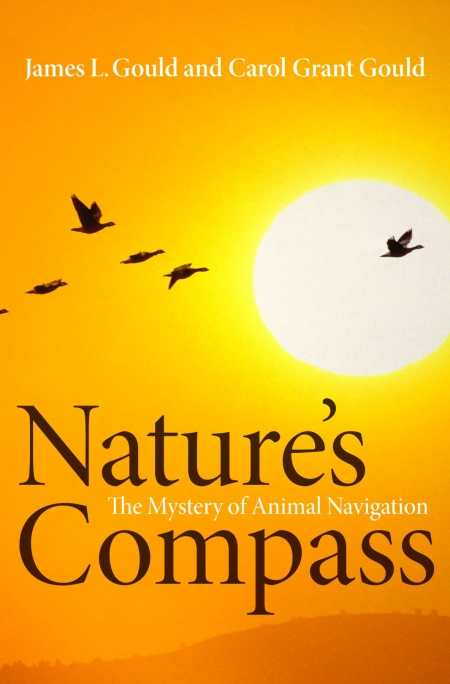It looks like you've stumbled upon a page meant to be read by our code instead of viewed directly. You're probably looking for this page.
Nature's Compass
The Mystery of Animal Navigation
Nature’s Compass: The Mystery of Animal Navigation begins, ironically, with a haunting scene from the human world: a September 1621 shipwreck. Ferdinando deVerar and the crew of the Portuguese ship San Antonio made several navigational errors and ran aground on a coral reef near Bermuda.
That dramatic wreck sets the stage, contrasting the dubious and labored navigation of humans with the ease with which countless other creatures map their journeys. At the moment of that shipwreck, more than thirty species of waterfowl as well as humpback whales, monarch butterflies, and numerous other species were successfully migrating from the northern hemisphere to destinations thousands of miles further south.
“Faced with what is to us an alien task in an unforgiving world, humans stand in awe of the judgment and precision with which animals use cues—often undetectable to us—that are frequently ambiguous and ephemeral,” write James Gould, a professor of ecology and evolutionary biology at Princeton University, and Carol Gould, a widely published science writer.
This scholarly and engaging book is the first in more than twenty years to summarize for the layman the latest research on the wonders of animal navigation. Whether it’s the long migrations of Arctic shorebirds, or the excursions of honey bees from hive to food sources, or the harrowing swim for survival of newborn loggerhead turtles into deep water, many mechanisms are at work. These include navigating by the sun, stars, or fixed landmarks; detecting patterns in polarized light or magnetic fields; using olfactory and audiometric cues; and cognitive mapping. Evidently, many creatures use multiple techniques that allow for, say, a cloudy day or adaptation to a new environment. If one technique doesn’t work, the next engages.
The book’s research is compelling in its own right, but the closing chapter reminds us of its broader significance. As mean temperatures rise, many bird species are migrating and nesting earlier in the spring. Sea levels are also rising, and habitats are disappearing for various reasons. Each long migration is an “act of faith,” as these creatures trust that their distant destination will be hospitable.
Comprehensive and fascinating, the book cites extensive research, including a significant amount conducted by the authors themselves. While illuminating, the book also raises many questions that it cannot yet answer. We have much to learn from these wondrous creatures but, as this book makes clear, much of their mystery also remains.
Reviewed by
Kristen Rabe
Disclosure: This article is not an endorsement, but a review. The publisher of this book provided free copies of the book to have their book reviewed by a professional reviewer. No fee was paid by the publisher for this review. Foreword Reviews only recommends books that we love. Foreword Magazine, Inc. is disclosing this in accordance with the Federal Trade Commission’s 16 CFR, Part 255.
